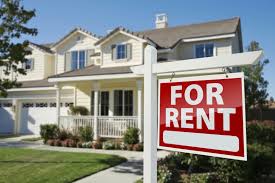 Real estate investment is a major financial play that requires no shortage of commitment. Any number of potential pitfalls can turn a seemingly sound investment property into a money pit. You have to be prepared for all contingencies when becoming a landlord. But how do you know when you’re ready to plunge into real estate investment? A recent article from U.S. News and World Report tackled this very subject.
Real estate investment is a major financial play that requires no shortage of commitment. Any number of potential pitfalls can turn a seemingly sound investment property into a money pit. You have to be prepared for all contingencies when becoming a landlord. But how do you know when you’re ready to plunge into real estate investment? A recent article from U.S. News and World Report tackled this very subject.
The article lists five requirements for becoming a landlord. They are:
- Having Your Personal Finances in Order
- Be Ready for A Steep Learning Curve
- Know the Market
- Be Prepared to Handle Repairs and Vacancies
- Know Your Capabilities
With regards to personal finances, you have to be able to afford all that goes into owning an investment property. Once secured, there will continue to be additional costs ranging from taxes to upkeep. If you’re not prepared to take on these added expenditures you can find yourself buried financially rather quickly.
Also, you will want to take the time to boost your credit score before a purchase as this will better the lending terms.
A steep learning curve is also to be expected. There are an array of rules and regulations when it comes to being a landlord, and each city has its own version. Most notably, this includes tenant’s right. You will need to know your city’s specific rules in this regard.
To know the market is to know as much as you can about the area where you want to buy. This includes understanding your competition. Know the type of units for rent, their going rates, vacancy rates, etc.
Handling repairs and vacancies is a major part of renting out an investment property. Any time a unit sits empty you’re losing money. However, this does not mean rushing to find a tenant. Skipping background/credit checks could save time and money initially, but could cost you thousands in the long runs. Eviction proceedings are exceedingly expensive when you consider attorney’s fees and lost rent.
As for repairs, U.S. New suggests budgeting 35 to 45 percent of gross income on fixed expenses and another 10 percent for major repairs like replacing a roof.
